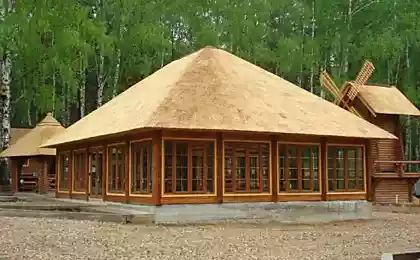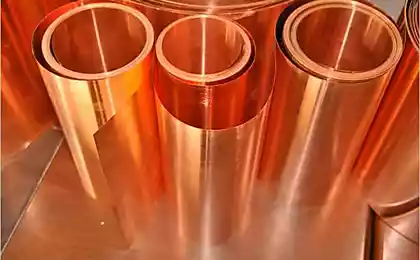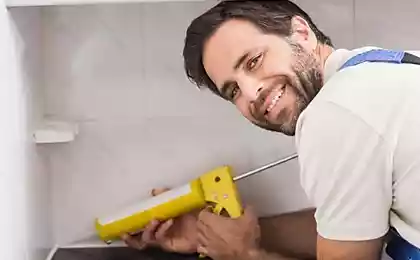712
Ageless tile: innovations of recent years
Natural ceramic tiles – piece roofing material made of plastic low-melting clay and baked. The history of its use in Europe is pretty predictable and monotonous, but in Russia it is full of unexpected UPS and downs. About this and about how today develops the Russian shingled market, and will be discussed in this article.
European history
Even in ancient times people learned how to mold with clay of different subjects and expose them to impart a special strength. Initially, these were pots, jugs and other items a simple life, but after the technology of their production and roasting was perfected to the last detail began to use molded and baked clay as a building material for walls, bricks, roofing – tiles.
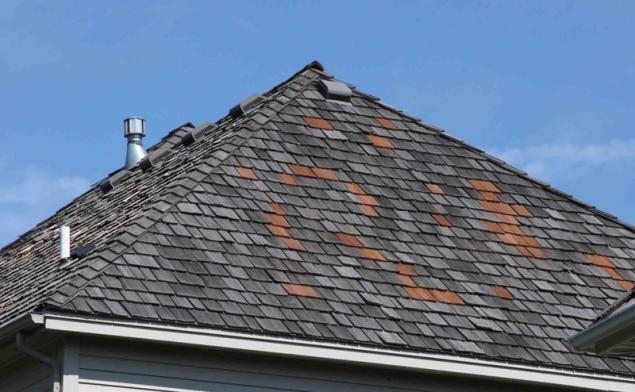
The most ancient samples of the roofing tile was discovered in the Greek village of Myloi (Myloi) – they were created in about 2300 years before Christ. From Greece the production technology of tile penetrated to Rome, and there received enormous popularity. All foreign language words indicating the tile, whether it is English "tile", the French "tuile", the German "ziegel" Flemish "tegel" is derived from the same root – the Latin "tegere", which means "to cover, to cover."
Ancient tiled roof was laid on the purlins in two rows. Put down the broad, flat tiles with narrow gutters, and top with a narrow round poluulybki. For ends used tiles hexagonal shape providing good water flow. Greek and Roman tiles, the low profile was kept on the roof of his weight and therefore was suitable only for roofs with a slight slope.
These roofs are good in hot and dry climate of the Mediterranean, and the propagation of the shingles in the cooler and rainy regions, its form and mounting technology have undergone some changes. The tiles became more relief, flat the bottom row of tiles, over time, to look almost exactly the same as the upper convex members. So there was a type of shingles, known as "monk and nun". Tiles of this type were fastened to the sheathing with nails and cement, and in the XI century, it acquired special tabs located on the back side, which supported the above elements and protect them from slipping off.
With the emergence of large cities, people have appreciated the fire safety of natural tile. Stone house covered with tiles, was invulnerable in the heat of the fires destroying whole blocks of wooden buildings and even entire cities. In 1342 Kaiser Ludwig and the Council of the city of Munich built the documents required to apply on roofs of new houses exclusively of the tile. Since XVII century this tile began to be used less and less.
The invention of interlocking tiles, made in 1841 in France by the brothers Gilardoni, was the real revolution: the need for laying ceramic tile on a mortar fell away, it was possible to put only one layer! In Germany, the first interlocking tile is made already in 1857 Already in 1860 brick master Jacobi (Jacobi) had a horse collar for kneading of clay, and in 1882 the press for tiles already operated a steam machine. 1860 – the year of Foundation of the company Meyer-Holsen, which has made a great contribution to the modernization of the production process of ceramic tiles. Five years later, thanks to a new automatic method of drying is made possible year-round production of tiles up to the ceramic products produced seasonally.
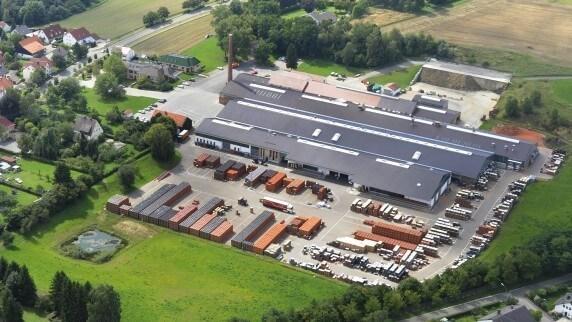
The invention of the tunnel kiln has become from a technical point of view, the next revolutionary stage in the history of the ceramic industry, so there is no need to manually load the furnace. 1960 – the plant of the Meyer-Holsen commissioned the world's first tunnel kiln for roof tiles. Also one of the first tunnel kilns were built in Duderstadt: Herbert Jacoby, the owner in the fourth generation, built in 1957-1959, the latest brick factory in Europe. Tunnel oven with a length of 80 m were heated heavy fuel oil.
The clinker plant has attracted visitors from all over Europe, promising technologies quickly found their imitators. After a few years of tunnel kiln was built in Bilshausen. In 1967, in accordance with requests from Meyer-Holsen company Rieterwerke designed four-section fully-automatic press for the manufacture of shingles, which allowed us to get away from manual production. In 1975 the exhibition Dach+Wand (roof and wall) Meyer-Holsen was the only German manufacturer, representing the audience of glazed tiles. Today almost all the factories offer their customers with a tile.
In a specialized address book, issued in 1925 by the publishing house Eisenschmidt, Germany was about 1120 manufacturers tile. In the 60-ies and 70-ies of the XX century the market demand for ceramic tiles fell sharply. From a variety of manufacturers of tiles of only three group and five companies of medium size. And only since 1975 slowly and gradually able to return to the old position. Advantage is possible to achieve not least as a result of higher quality, which is achieved due to the new methods of production: the firing process in the tunnel kiln was optimized through computer control.
Recall important: the shape, color and dignity
In modern construction is used, the ceramic tile three forms:
Glaze – a glassy coating on the surface of ceramic products. Has a lot of advantages – resistance to abrasion and chemicals, dressy appearance.
Advantages of tile:
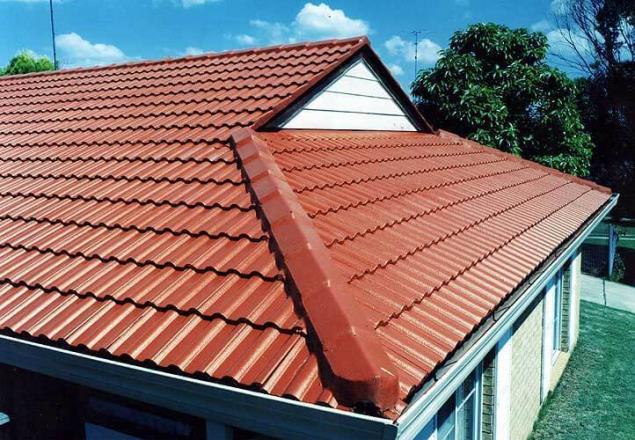
The first tile came to Russia from Byzantium together with the adoption of Christianity, but at the time of the Mongol invasion, the tradition of its use was lost. She returned in XVI–XVII centuries in connection with the activities of the invited Italian architects. But with the eighteenth century, when to cover roofs began to use metal to shingles disappeared again.
Before the First world war in Russia annually was used up to 100 million pieces of ceramic tiles. It was cheaper and safer iron wood, and the need for a quality product greatly exceeded supply. However, the automatic machine production of ceramic tiles existed only in the Baltic provinces, in the remaining territory of Russia tiles were made by hand
Market
At present, the annual production of ceramic tiles in the world is more than 2.5 million m2 and has a positive trend.
As you can see from the table, the majority of manufacturers of ceramic tiles is concentrated in Germany. Most often it is enterprises with more than 100-year history grown from a small family business. So, the concern Wienerberger has grown from a small Austrian company, founded by Alois Miesbach in 1819 in the Wienerberg city Vienna. In 1869 the company was registered on the Vienna stock exchange and continued to develop as an Austrian company producing high quality ceramic bricks. In 1986 began a rapid expansion of the enterprise and onto the international scene. For a short time a small Austrian company has developed into a world leader. Today the Wienerberger AG is a modern, fast growing company with international shareholders. The company operates in more than 226 brick factories in 26 countries of Europe and the USA and is the world's largest manufacturer of ceramic bricks and tiles.
Major manufacturers brand, the company the Number of plants the Volume of production, mln. units per Year base Guarantee Creaton (Germany) 10 270 1884 50 years Meyer-Holsen (Germany) 2 — 1860 50 years/20 years for the purchase of the previously purchased Terreal (France) 24 — --- Guarantee for frost resistance – 30 years. Bogener 3 — 1899 30 years (all these manufacturers are part of the concern Wienerberger AG, Austria) Jungmeier— --- 1820 Von Muller Dachziegel— --- 1875 Koramic 260 350 — ROBEN (Poland) 70 14 1855 30 years of Erlus AG (Germany) 1 130 1842 30 years Tondach AG (Austria) 30 350 1881 33 Braas (Germany) — 200 — 30 years + 10 year extended warranty on the frost La Escandella (Spain) 1 400 000 t 1997 30 years of nelskamp (Germany) 6 — 1926 30 years Imerys (France) 12 1.3 million tonnes of 1820 30 years Toza Markovic (Serbia) 1 100 1866 30 years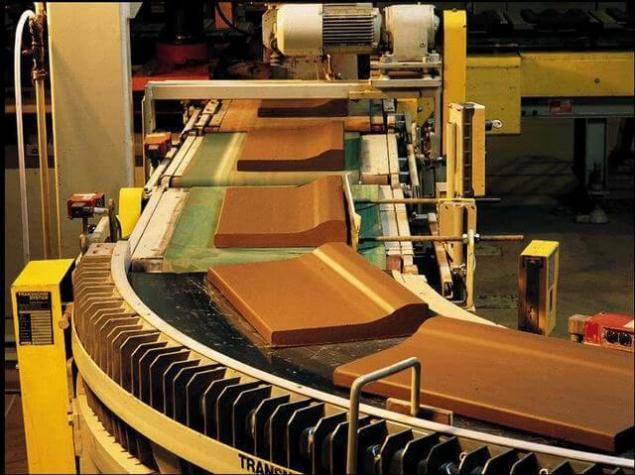
Innovations in recent years
Progress does not stand still, and even such conservative industries as manufacturing ceramic tiles, developing and improving. Despite the fact that the essence of the process remains the same as thousands of years ago, experts find ways to make the tile more beautiful and safer, and its production is faster and better.
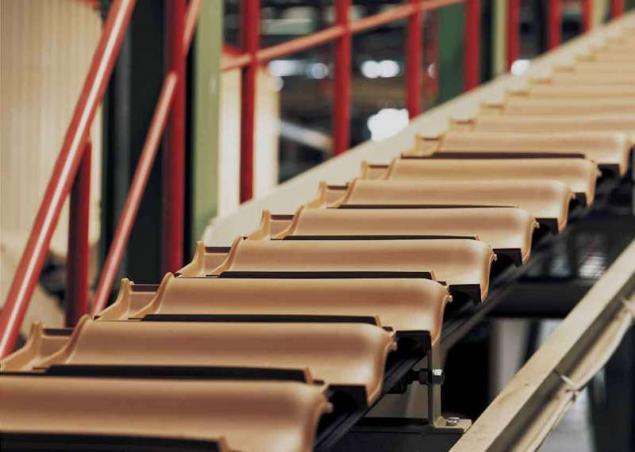
How to determine the quality of the shingles
Quality testing can be of two types. The first requires a special laboratory and competent professionals, and the second roofer can conduct yourself directly on the site. Quality control of firing, the presence of hairline and other cracks is carried out by means of the blow inflicted on the tiles with the humidity. Dull bell indicates a lack of firing, rattling – the presence of cracks. However, note that the ringing ingibirovany and wet the tiles more deaf. Properly annealed ceramic tile does not fade, its fragments have sharp edges. In addition, the quality of the shingles affects the quality of raw materials and as production lines. So, some plants are regularly upgrading their production lines, which improves the quality and geometry of the tiles, whereas others, in the desire to provide the market with cheaper product, refuse to make serious investments in plants and maximally exploit the old line.
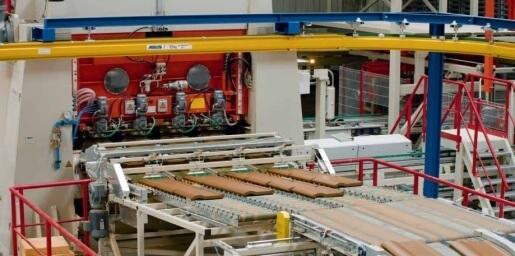
Tiles should not be cracked. Engobes, glazes and other coatings have strong adhesion to tiles. Shabby - STI and scratches that may occur during loading, transportation and packaging of the shingles, do not affect its consumer - ical value. Color requirements must be confirmed prior to delivery.
To evaluate the surface quality of ceramic tiles you need from the same distance from the samples of a tile, which is usually the man, looking at the roof (i.e., at a distance of 6-10 m from the roof slope).
Standards
Quality tiles of European production is regulated by the standard EN 1304:2005. Dachziegel und Formziegel. Begriffe und Produktanforderunge ("clay roofing Tiles and additional elements. Definitions and specifications for the products"). This document was developed by the technical Committee for standardization CEN/ TC 128, it implemented essential safety requirements of EU Directive 89/106.
Important practical tip: it is advisable to choose tiles that meet and even internal Germany standard (DIN), it is much more restrictive than the European norm EN. However, the more stringent is the Austrian norm O-Norm.
Marking
"CE" marking required under the law. It is a kind of "passport" of ceramic products, which allows it to circulate freely in the EU. It meets the minimum technical requirements necessary to market product distribution. This conformity of products to mandatory technical specifications mentioned in the standard EN 1304.
The product may also be marked "NF" is a quality mark issued by the Association Afnor (French Association of standardization). It is indicative of a more extended set of tests.
At the moment the Russian market of natural tile is in the early stages of development, despite the fact that ceramics from Europe comes more than a year. The lack of own production facilities significantly inhibits the growth of the market, but, even so, the progress is evident. Three years ago, the market of ceramic tiles was estimated at 150-200 thousand m2, and in 2012 it is possible to speak about approximate numbers 300-350 thousand m2. Of course, this is a drop in the ocean compared to the volume of European markets, however, there is every reason to suppose that durability and quality of natural tile Russians finally appreciated! published
P. S. And remember, only by changing their consumption — together we change the world! ©
Join us in Facebook , Vkontakte, Odnoklassniki
Source: www.schiefer.ru/publication/nestareyuchaya_cherepica/
European history
Even in ancient times people learned how to mold with clay of different subjects and expose them to impart a special strength. Initially, these were pots, jugs and other items a simple life, but after the technology of their production and roasting was perfected to the last detail began to use molded and baked clay as a building material for walls, bricks, roofing – tiles.

The most ancient samples of the roofing tile was discovered in the Greek village of Myloi (Myloi) – they were created in about 2300 years before Christ. From Greece the production technology of tile penetrated to Rome, and there received enormous popularity. All foreign language words indicating the tile, whether it is English "tile", the French "tuile", the German "ziegel" Flemish "tegel" is derived from the same root – the Latin "tegere", which means "to cover, to cover."
Ancient tiled roof was laid on the purlins in two rows. Put down the broad, flat tiles with narrow gutters, and top with a narrow round poluulybki. For ends used tiles hexagonal shape providing good water flow. Greek and Roman tiles, the low profile was kept on the roof of his weight and therefore was suitable only for roofs with a slight slope.
These roofs are good in hot and dry climate of the Mediterranean, and the propagation of the shingles in the cooler and rainy regions, its form and mounting technology have undergone some changes. The tiles became more relief, flat the bottom row of tiles, over time, to look almost exactly the same as the upper convex members. So there was a type of shingles, known as "monk and nun". Tiles of this type were fastened to the sheathing with nails and cement, and in the XI century, it acquired special tabs located on the back side, which supported the above elements and protect them from slipping off.
With the emergence of large cities, people have appreciated the fire safety of natural tile. Stone house covered with tiles, was invulnerable in the heat of the fires destroying whole blocks of wooden buildings and even entire cities. In 1342 Kaiser Ludwig and the Council of the city of Munich built the documents required to apply on roofs of new houses exclusively of the tile. Since XVII century this tile began to be used less and less.
The invention of interlocking tiles, made in 1841 in France by the brothers Gilardoni, was the real revolution: the need for laying ceramic tile on a mortar fell away, it was possible to put only one layer! In Germany, the first interlocking tile is made already in 1857 Already in 1860 brick master Jacobi (Jacobi) had a horse collar for kneading of clay, and in 1882 the press for tiles already operated a steam machine. 1860 – the year of Foundation of the company Meyer-Holsen, which has made a great contribution to the modernization of the production process of ceramic tiles. Five years later, thanks to a new automatic method of drying is made possible year-round production of tiles up to the ceramic products produced seasonally.

The invention of the tunnel kiln has become from a technical point of view, the next revolutionary stage in the history of the ceramic industry, so there is no need to manually load the furnace. 1960 – the plant of the Meyer-Holsen commissioned the world's first tunnel kiln for roof tiles. Also one of the first tunnel kilns were built in Duderstadt: Herbert Jacoby, the owner in the fourth generation, built in 1957-1959, the latest brick factory in Europe. Tunnel oven with a length of 80 m were heated heavy fuel oil.
The clinker plant has attracted visitors from all over Europe, promising technologies quickly found their imitators. After a few years of tunnel kiln was built in Bilshausen. In 1967, in accordance with requests from Meyer-Holsen company Rieterwerke designed four-section fully-automatic press for the manufacture of shingles, which allowed us to get away from manual production. In 1975 the exhibition Dach+Wand (roof and wall) Meyer-Holsen was the only German manufacturer, representing the audience of glazed tiles. Today almost all the factories offer their customers with a tile.
In a specialized address book, issued in 1925 by the publishing house Eisenschmidt, Germany was about 1120 manufacturers tile. In the 60-ies and 70-ies of the XX century the market demand for ceramic tiles fell sharply. From a variety of manufacturers of tiles of only three group and five companies of medium size. And only since 1975 slowly and gradually able to return to the old position. Advantage is possible to achieve not least as a result of higher quality, which is achieved due to the new methods of production: the firing process in the tunnel kiln was optimized through computer control.
Recall important: the shape, color and dignity
In modern construction is used, the ceramic tile three forms:
- flat "beaver tail", when installing each tile of the top row covers the junction of the other two, lying next below;
- interlocking ceramic tiles connected "castle" mount and fit in a single layer;
- grooved – "monk-nun", ceramic tiles of the lower row is placed concave side downwards, and on the joints of the lower tiles with the convex side up are placed on the tiles of the top row.
Glaze – a glassy coating on the surface of ceramic products. Has a lot of advantages – resistance to abrasion and chemicals, dressy appearance.
Advantages of tile:

- Refractoriness.
- Resistance to aggressive atmospheric factors (acid rain, UV radiation).
- The lack of accumulation of static electricity requires grounding.
- The insulating properties. Massive tiles absorb the sound of rain or wind.
- A low thermal conductivity. This property of shingles prevents excessive warming of the house scorching sun in the summer and saves energy in the winter.
- The water vapor permeability. In the interior creates a comfortable indoor climate, prevents the formation of condensation inside the building.
- Environmental safety.
- Tiling is not subject to corrosion.
- Frost. Water absorption of tiles is less than 0.5%, so it is able to withstand even the most severe frosts.
- Ensuring proper ventilation of roof space (as any piece of material!).
- High Flexural strength (withstands weight of three adult men) and hardness as natural granite (7 on the Mohs scale).
- Efficiency. Requires a minimum of maintenance costs of the roof. Good maintainability.
- Protection of color. Thanks to the technology of dyeing in the mass of the tile does not fade and retains its original color for years to come.
- Tile surface, having served the prescribed age, does not require complicated recycling: broken pottery will return to the earth of the ceramic shards will turn out good gravel.
The first tile came to Russia from Byzantium together with the adoption of Christianity, but at the time of the Mongol invasion, the tradition of its use was lost. She returned in XVI–XVII centuries in connection with the activities of the invited Italian architects. But with the eighteenth century, when to cover roofs began to use metal to shingles disappeared again.
Before the First world war in Russia annually was used up to 100 million pieces of ceramic tiles. It was cheaper and safer iron wood, and the need for a quality product greatly exceeded supply. However, the automatic machine production of ceramic tiles existed only in the Baltic provinces, in the remaining territory of Russia tiles were made by hand
Market
At present, the annual production of ceramic tiles in the world is more than 2.5 million m2 and has a positive trend.
As you can see from the table, the majority of manufacturers of ceramic tiles is concentrated in Germany. Most often it is enterprises with more than 100-year history grown from a small family business. So, the concern Wienerberger has grown from a small Austrian company, founded by Alois Miesbach in 1819 in the Wienerberg city Vienna. In 1869 the company was registered on the Vienna stock exchange and continued to develop as an Austrian company producing high quality ceramic bricks. In 1986 began a rapid expansion of the enterprise and onto the international scene. For a short time a small Austrian company has developed into a world leader. Today the Wienerberger AG is a modern, fast growing company with international shareholders. The company operates in more than 226 brick factories in 26 countries of Europe and the USA and is the world's largest manufacturer of ceramic bricks and tiles.
Major manufacturers brand, the company the Number of plants the Volume of production, mln. units per Year base Guarantee Creaton (Germany) 10 270 1884 50 years Meyer-Holsen (Germany) 2 — 1860 50 years/20 years for the purchase of the previously purchased Terreal (France) 24 — --- Guarantee for frost resistance – 30 years. Bogener 3 — 1899 30 years (all these manufacturers are part of the concern Wienerberger AG, Austria) Jungmeier— --- 1820 Von Muller Dachziegel— --- 1875 Koramic 260 350 — ROBEN (Poland) 70 14 1855 30 years of Erlus AG (Germany) 1 130 1842 30 years Tondach AG (Austria) 30 350 1881 33 Braas (Germany) — 200 — 30 years + 10 year extended warranty on the frost La Escandella (Spain) 1 400 000 t 1997 30 years of nelskamp (Germany) 6 — 1926 30 years Imerys (France) 12 1.3 million tonnes of 1820 30 years Toza Markovic (Serbia) 1 100 1866 30 years

Innovations in recent years
Progress does not stand still, and even such conservative industries as manufacturing ceramic tiles, developing and improving. Despite the fact that the essence of the process remains the same as thousands of years ago, experts find ways to make the tile more beautiful and safer, and its production is faster and better.
- Meyer-Holsen possesses one of a kind combined unit for mixing and packaging of the shingles. Each is ready to party, consisting of about 1000 tiles automatically reshuffled and packaged in ready for laying the blocks.
- The company Creaton is actively working to upgrade its model range in order to use ceramic tile on the lower slopes of the roof without the use of additional waterproofing. For this model, tested in a special chamber that simulates the wind and rain, in order to check the quality of the locks are the connection tiles.
- The constant search for new solutions to different company Erlus. Tiles with gold and platinum-plated, self-cleaning tiles – here is a partial list of the amazing technological solutions Erlus.
- The Tondach group pays special attention to products for the restoration of roofs. To work with Orthodox facilities professionals have developed a model ortodox Tasche or "Russian shield". This tile is available in several colors of glaze, and in two sizes – standard and reduced, making possible a reliable laying even the most complex domed roof.
- Gaining popularity of large format tiles. It allows you to significantly speed up the process of installation, save the very tiles to optimally use the slats of the crates. And thanks to the innovative "two tiles in one" can be connected to traditional small-format tiles and large format convenience.

How to determine the quality of the shingles
Quality testing can be of two types. The first requires a special laboratory and competent professionals, and the second roofer can conduct yourself directly on the site. Quality control of firing, the presence of hairline and other cracks is carried out by means of the blow inflicted on the tiles with the humidity. Dull bell indicates a lack of firing, rattling – the presence of cracks. However, note that the ringing ingibirovany and wet the tiles more deaf. Properly annealed ceramic tile does not fade, its fragments have sharp edges. In addition, the quality of the shingles affects the quality of raw materials and as production lines. So, some plants are regularly upgrading their production lines, which improves the quality and geometry of the tiles, whereas others, in the desire to provide the market with cheaper product, refuse to make serious investments in plants and maximally exploit the old line.

Tiles should not be cracked. Engobes, glazes and other coatings have strong adhesion to tiles. Shabby - STI and scratches that may occur during loading, transportation and packaging of the shingles, do not affect its consumer - ical value. Color requirements must be confirmed prior to delivery.
To evaluate the surface quality of ceramic tiles you need from the same distance from the samples of a tile, which is usually the man, looking at the roof (i.e., at a distance of 6-10 m from the roof slope).
Standards
Quality tiles of European production is regulated by the standard EN 1304:2005. Dachziegel und Formziegel. Begriffe und Produktanforderunge ("clay roofing Tiles and additional elements. Definitions and specifications for the products"). This document was developed by the technical Committee for standardization CEN/ TC 128, it implemented essential safety requirements of EU Directive 89/106.
Important practical tip: it is advisable to choose tiles that meet and even internal Germany standard (DIN), it is much more restrictive than the European norm EN. However, the more stringent is the Austrian norm O-Norm.
Marking
"CE" marking required under the law. It is a kind of "passport" of ceramic products, which allows it to circulate freely in the EU. It meets the minimum technical requirements necessary to market product distribution. This conformity of products to mandatory technical specifications mentioned in the standard EN 1304.
The product may also be marked "NF" is a quality mark issued by the Association Afnor (French Association of standardization). It is indicative of a more extended set of tests.
At the moment the Russian market of natural tile is in the early stages of development, despite the fact that ceramics from Europe comes more than a year. The lack of own production facilities significantly inhibits the growth of the market, but, even so, the progress is evident. Three years ago, the market of ceramic tiles was estimated at 150-200 thousand m2, and in 2012 it is possible to speak about approximate numbers 300-350 thousand m2. Of course, this is a drop in the ocean compared to the volume of European markets, however, there is every reason to suppose that durability and quality of natural tile Russians finally appreciated! published
P. S. And remember, only by changing their consumption — together we change the world! ©
Join us in Facebook , Vkontakte, Odnoklassniki
Source: www.schiefer.ru/publication/nestareyuchaya_cherepica/
Green food —incredible benefits for your health
Find out why to throw a foil ball in the washing machine




